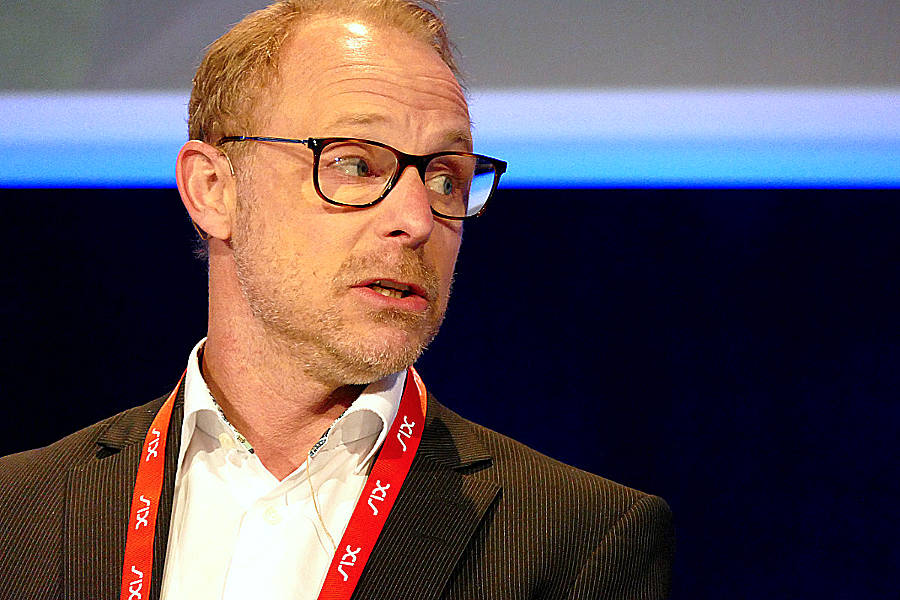
With just a handful of traders, Swedish pension fund AP2 leverages machine learning-based vendor technology to handle $25 billion annual equities turnover for its quant strategies
Working as a trader for a Swedish government pension fund might seem a recipe for lifelong career stability. But for Mathias Eriksson, senior trader equities and credits, trading at the country’s AP2 buffer fund, the situation is anything but. The government is in the midst of consolidating five buffer funds into three. While Eriksson can glean comfort from the fact that AP2 will survive, he can’t predict the final outcome.
If performance is a guide, Eriksson should have nothing to worry about. The Gothenburg-based US$48 billion fund reported a 8.2% net return in 2024, with an expense ratio of just 8 basis points. Of this, US$27 billion is invested in equities, which the fund manages using a quantitative dynamic asset allocation approach.
“The main part of our equity management is based on a quant model”, he says. “We have a large developed market mandate, that is about $8 billion of value. And we have an emerging market mandate, and the value of that is about four and a half billion dollars. And we have two domestic mandates as well, based on fundamental research”.
“The quant team are rebalancing or running the model on a scheduled basis. They do that every week, and the total turnover for the quant team is about $25 billion a year. From a turnover perspective, it’s huge. And, given that our trading desk has only three people, or four, if you add the FX trader, we need to be very streamlined. We need to have a lot of straight-through processing (STP). We need to have as much technical help as possible in order to handle this amount of trading”.
However, Eriksson cautions that trade-offs are involved. “Being a governmental pension fund, there is always cost pressure”, he says. “If everything was STP and automated, we could probably save transaction costs with help from technologies and from models. But we still think that human beings add value to the process”.
Moreover, Eriksson points out that AP2’s traders are less important than the investment team when it comes to the fund’s total performance. “We use technology to save parts of basis points when we are trading. But what is even more important is the investment strategy. We are talking of percentage points if we choose the wrong strategy. So that process is more manual in that sense that more people are working on it.”
Optimising quant signals
As a 20-year veteran of AP2, Eriksson understands his colleagues’ strategy well. “We use traditional quant factors, like momentum, value, quality and size”, he says. “We try to optimise the best blend of factors or signals for each specific region, on a continuous basis”.

“We have a huge library of different signals, of different factors that the quant team can use, at different points in time”, Eriksson continues. “Some factors are better than others, so we continuously evaluate which factors or signals are optimal. And that can differ from region to region, and it differs over time. We also have a liquidity model for creating the trades, and also a kind of TCA model to create trades that are liquid”.
And that is just the alpha side, since AP2 also determines asset allocation using its own custom benchmark. “We build our own benchmarks internally, on the beta side, trying to have optimal benchmarks compared to a strategic benchmark”, Eriksson explains. “On the equity side we use the MSCI universe, all the stocks within MSCI standard indices. Then we run an optimisation to define the starting weights after each quarterly MSCI index rebalance and send these to MSCI, to calculate the custom index on a daily basis”.
“For the Swedish population, the benchmark is actually much more important for their pensions, than each bet, or the alpha. The beta is what adds value. Of course, our goal is to beat the benchmark, so we aim to earn alpha as well. But the contribution to the P&L of the alpha is much lower than the contribution of the of the beta or the benchmark index selection”.
Only after all these multiple stages are carried out, the AP2 trading desk can see an actual order, Eriksson explains. “The quant team generate a list of orders, a list of trades which is imported into our trading system, into our EMS. When the trade hits the EMS, the trading team owns the trade. We own the P&L, while the underlying positions are owned by the quant team or by the equity team. From a pure P&L perspective it’s up to the trading team to decide strategy, to decide where to trade, and so on.”
Using AI for broker allocation
Using only regulated markets (AP2 doesn’t do any OTC equity trading), Eriksson’s team is heavily dependent on its favoured vendor, Virtu.
“We use Virtu, both for EMS, and also for TCA”, Eriksson says. “We do that because it’s very convenient for us when we trade, all the trading information is already in the EMS, and then it’s automatically fed into the TCA.. Whenever we have traded, we can immediately do a TCA analysis of what we have done”.
“If we’re looking at a developed market trade, for example, it’s between maybe 300-500 names or unique equities per trade. We can’t go into detail with every single order. And we need to decide which broker to use for each trade.”.
Allocation of trades to brokers is another area where AP2 is a heavy user of technology, this time with UK-based vendor BTON, using machine learning. “They have trained their model on our historical data, as well as other clients’ data”, Eriksson explains. “When we are going to trade, we upload the orders into our EMS, and the BTON algo wheel is built into our EMS. So we choose a strategy for the trades and send that off to BTON’s service. They run the evaluation and suggest a broker that optimal for that individual order, for that individual stock. With just one click, we then send the trade to the identified broker with a preset strategy. So, we define the strategy, and when it’s sent off to the broker, all the parameters are already set.”
“The trading strategy defines parameters such as what algorithm is the best to use? How should they treat the trade? Should it be internalised as trading on their own risk book? Trading lit or trading dark?
Significantly, as a government pension fund, AP2 is not subject to EU MiFID 2 regulations so is free to adopt a fully bundled research model.
“We are still bundled, which means that in order to get research, we need to allocate orders to each individual broker”, Eriksson explains. “We conduct a broker evaluation once a year, when we look at both trading performance, and the quality of the research that we get. “The broker review is based on the review for all asset classes, including derivatives, fixed income, FX, and equities. So all teams are involved in the evaluation.”
After that, we set a broker list, and the commission allocation for each individual broker. This is fed into BTON as well. And BTON’s tool has a memory – it knows whom we have traded with in the past, and keeps track of the commission allocation over time. At the beginning of the year, it doesn’t matter much if we allocate 100% of the trades to one broker, but the closer we get to year-end, the more important it is that we end up with a commission allocation close to our target.”
Stable execution
According to Eriksson, the new approach is popular with the sell-side. “Historically, we traded one week with one broker, the next week with another broker, trying to evenly spread out the commission allocation. We have six brokers on the broker list, so they got one week of orders every six weeks. Now, we have a closer connection with all the brokers. They get approximately the same number of orders, on a yearly basis, as they had before. But now they get orders every week. The brokers think that this setup is much better because we have a closer connection.”
This is particularly important when volatility increases, Eriksson continues. “It’s a fairer evaluation of the brokers as well. If it was a very volatile day when you got the trade, then the P&L might look bad compared to your competitors, even though it was just the volatility that created that. But now it’s the same volatility for all brokers that we are trading with every time. So it’s a fair comparison, in that sense.”

“The spreads have come up a little bit this year, or pretty much so over a period of time. But despite that, we can see a more stable execution, even though the spreads are wider and given the situation in the world, the volatility has been higher as well. But we can still see a more stable execution – in other words, the variation of the P&L, is lower than we have seen in the past. That is a result of the BTON strategy and algo wheel.”
So far, AP2 has applied BTON to its development market portfolio but emerging markets are a work in progress. “The problem with emerging markets is that we don’t have as much data as we have for developed markets”, Eriksson explains. “We do not only evaluate the brokers, we evaluate BTON as well. Before adding it to emerging markets, we would like to do the evaluation to see that the algo wheel is working”.
“As for using non-traditional brokers, the scope for that is limited by AP2’s bundling policy”, Eriksson says. “We use execution only brokers as well. But that is used for a smaller portion of our execution. That’s because when we trade with them, we pay commission to a broker who we don’t get any research from.

Meanwhile, AP2’s quant investing strategy is being broadened into derivatives. “We did a pretty big strategic change in March 2024 where we added a number of new mandates”, Eriksson notes. “Historically, almost all our mandates have been cash mandates so we haven’t been using derivatives to very large extent. But in this strategic overview, we added a number of derivatives-only mandates that take into consideration the size of the underlying cash holdings for collateral purposes. Now we can use that muscle on the derivative side, and are building up new mandates with derivatives exposure.”

